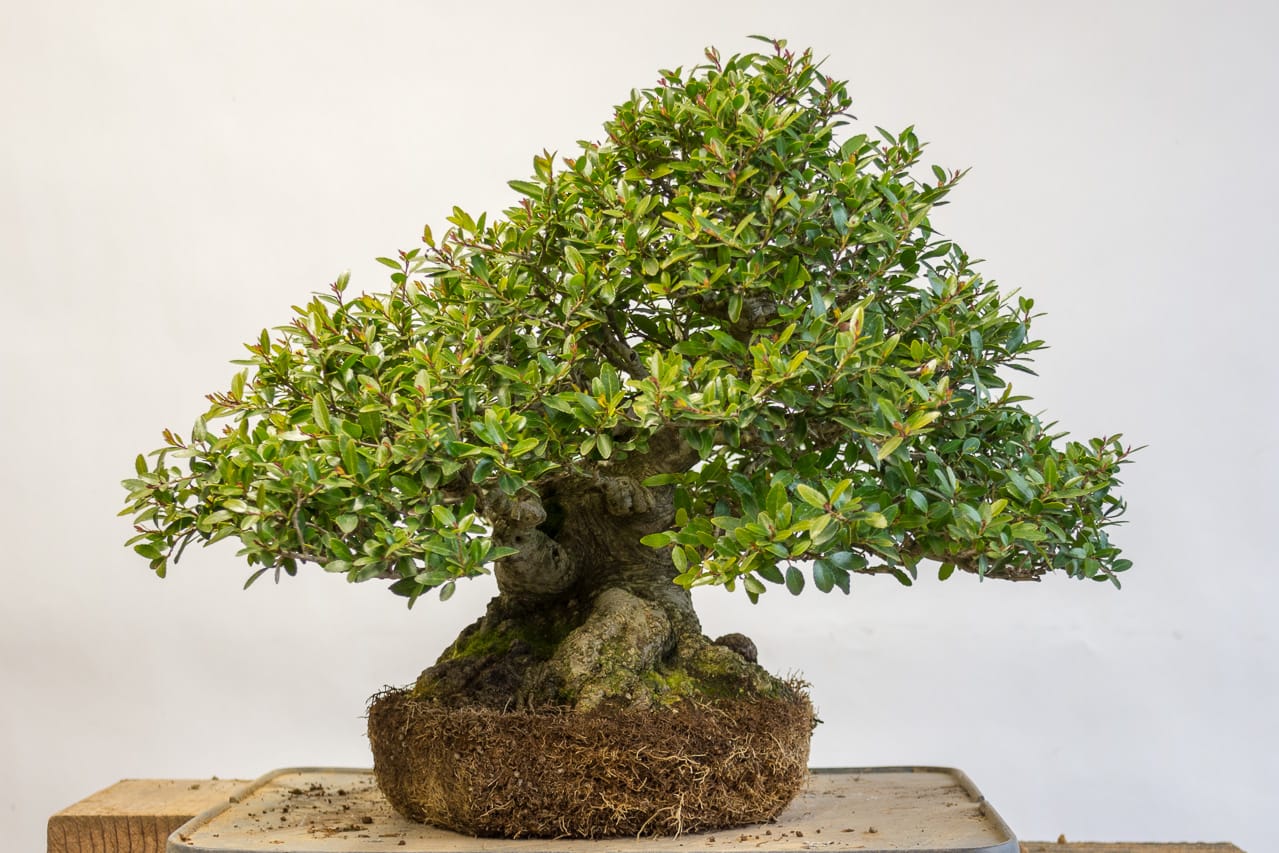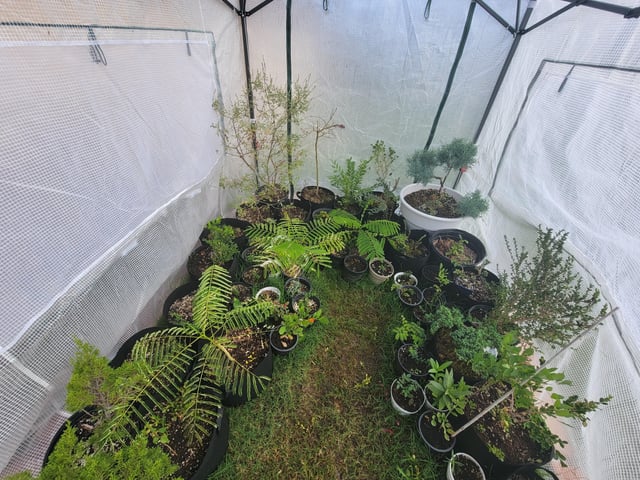The best time to repot bonsai is in early spring. This period allows the tree to recover quickly and grow well.
Repotting bonsai trees is an essential part of their care. It ensures they have enough space to grow and stay healthy. Early spring is ideal because the tree is just coming out of dormancy. The roots are not yet active, which minimizes stress and damage.
During this time, the tree can adapt to its new pot and soil. Understanding the right time to repot your bonsai can make a big difference in its health and beauty. We will explore why early spring is the best time and how to do it properly. Let’s dive into the details.

Credit: www.reddit.com
Ideal Seasons For Repotting
Spring is the best time to repot bonsai. During spring, trees grow fast. New roots grow quickly, too. This helps the bonsai recover well. Repotting in spring gives the tree a fresh start. The weather is mild and pleasant. It helps the tree adapt to its new pot. Strong growth during this time is key. Spring offers plenty of sunlight and warmth. These are good for the bonsai’s health.
Fall is another good time for repotting. Cooler temperatures are better for the roots. The tree is less stressed in cool weather. Fall repotting helps the bonsai prepare for winter. It allows the tree to settle in before cold weather hits. Fall repotting means less risk of heat damage. The tree’s growth slows down, but it still adapts well. Fall offers a good balance of light and temperature.
Signs Your Bonsai Needs Repotting
Roots growing in circles at the bottom of the pot. Roots pushing up from the soil. Roots visible through drainage holes. The plant seems too big for its pot. Growth has slowed down or stopped.
The soil dries out quickly. The soil doesn’t absorb water well. Water pools on top of the soil. Soil looks compact and hard. Nutrients might be depleted.
Choosing The Right Soil Mix
Organic soil includes components like pine bark and compost. These help hold water. They also provide nutrients. Inorganic soil has materials like akadama, pumice, and lava rock. These do not break down. They ensure good drainage and aeration. Mixing both types gives the best results. This mix supports healthy roots.
Organic soil holds more water. It decomposes over time. This can clog the soil. Inorganic soil drains well. It does not break down. Combining both types is ideal. This mix provides balance. The roots get both water and air.
Good drainage is crucial. It prevents root rot. It also stops water from sitting in the pot. Use a mix with good drainage. Add larger particles to the soil. This helps water flow out easily. Proper drainage keeps the bonsai healthy.

Credit: www.bonsaiempire.com
Preparing Your Bonsai For Repotting
Trimming roots is a key step. Use sharp scissors. Cut away dead roots. Be gentle to avoid damage. Remove only a small portion. Do not cut too many roots. Healthy roots should stay.
Pruning helps your bonsai grow. Use sharp tools for clean cuts. Trim branches evenly. Remove any dead or broken branches. Shape the tree as you like. Keep it balanced and healthy.
Step-by-step Repotting Process
Repot bonsai trees in early spring, right before new growth begins. This timing reduces stress and aids recovery.
Removing From Old Pot
First, gently remove the bonsai from its old pot. Hold the trunk and tap the pot’s sides. This helps loosen the roots. Carefully lift the tree out. Be sure not to damage the roots. Use a root hook or chopstick to untangle roots. Remove old soil from the roots. Trim any long or dead roots. This encourages new growth.
Positioning In New Pot
Next, place a layer of soil in the new pot. Position the bonsai in the center. Spread the roots evenly. Add more soil around the roots. Press the soil gently. Ensure there are no air pockets. Water the bonsai thoroughly. This helps the soil settle. Check the tree’s stability. It should stand firm.
Aftercare Tips
Water the bonsai when the soil feels dry. Ensure the water reaches all roots. Use a spray bottle for gentle watering. Too much water can harm the tree. Check the soil often. Watering needs change with seasons. In summer, water more often. In winter, water less. Always use clean, fresh water. Avoid tap water with chemicals. Rainwater is best for bonsai. Keep the soil moist, not soggy.
Bonsai trees need plenty of light. Place them near a window. Ensure they get at least 5 hours of sunlight daily. Rotate the tree often. This helps all sides get light. Too much direct sunlight can burn the leaves. Filtered sunlight is best. Some bonsai need more shade. Learn your bonsai’s needs. Adjust light as needed. Indoor bonsai need grow lights. Use them during dark months.
Common Mistakes To Avoid
Bonsai trees need water, but not too much. Overwatering can harm your bonsai. It can cause root rot. This makes the tree weak. Always check the soil first. If it is still wet, wait a bit longer. Your bonsai will thank you.
Wrong soil can hurt your bonsai tree. Bonsai soil should drain well. It needs to have air pockets. Regular garden soil is too dense. It holds too much water. Use soil made for bonsai trees. This helps roots breathe and grow strong.
Expert Advice And Resources
Seeking help from an expert can save your bonsai. Professionals know the best time to repot. They understand the specific needs of each bonsai type. This ensures your tree stays healthy.
Experts can also guide you on soil choice. They can show you proper techniques. This can prevent damage to your bonsai’s roots. It is always wise to consult a professional if unsure.
Reading books and articles about bonsai can be very helpful. These resources offer a wealth of knowledge. You can learn about the different types of bonsai. Learn the best care practices.
Some recommended books include “The Complete Book of Bonsai” by Harry Tomlinson and “Bonsai Basics” by Colin Lewis. These books cover all you need to know. They are great for both beginners and experienced growers.

Credit: bonsaitonight.com
Frequently Asked Questions
When Is The Best Time To Repot Bonsai?
The best time to repot bonsai is during early spring. This allows the tree to recover and grow in the new soil.
How Often Should You Repot Bonsai?
Repot bonsai every 2-3 years for younger trees. Older trees can be repotted every 3-5 years.
What Are The Signs Bonsai Needs Repotting?
Signs include roots circling the pot, poor water absorption, and stunted growth. Check the roots to confirm.
Can I Repot Bonsai In Fall?
It’s best to avoid fall repotting. Repotting in early spring is ideal for tree recovery and growth.
Conclusion
Repotting bonsai at the right time ensures plant health and growth. Spring is often the best season for repotting. The plant’s roots grow actively then. Check your bonsai’s roots often. This helps spot the right time. Avoid repotting during winter or late fall.
The plant rests during these seasons. Always use good soil. Proper care after repotting is crucial. Water and sunlight are key. Happy repotting, and enjoy your thriving bonsai!

My mission is to help you bring the beauty of nature indoors with expert advice, detailed plant care guides, and creative design ideas.





Leave a Reply